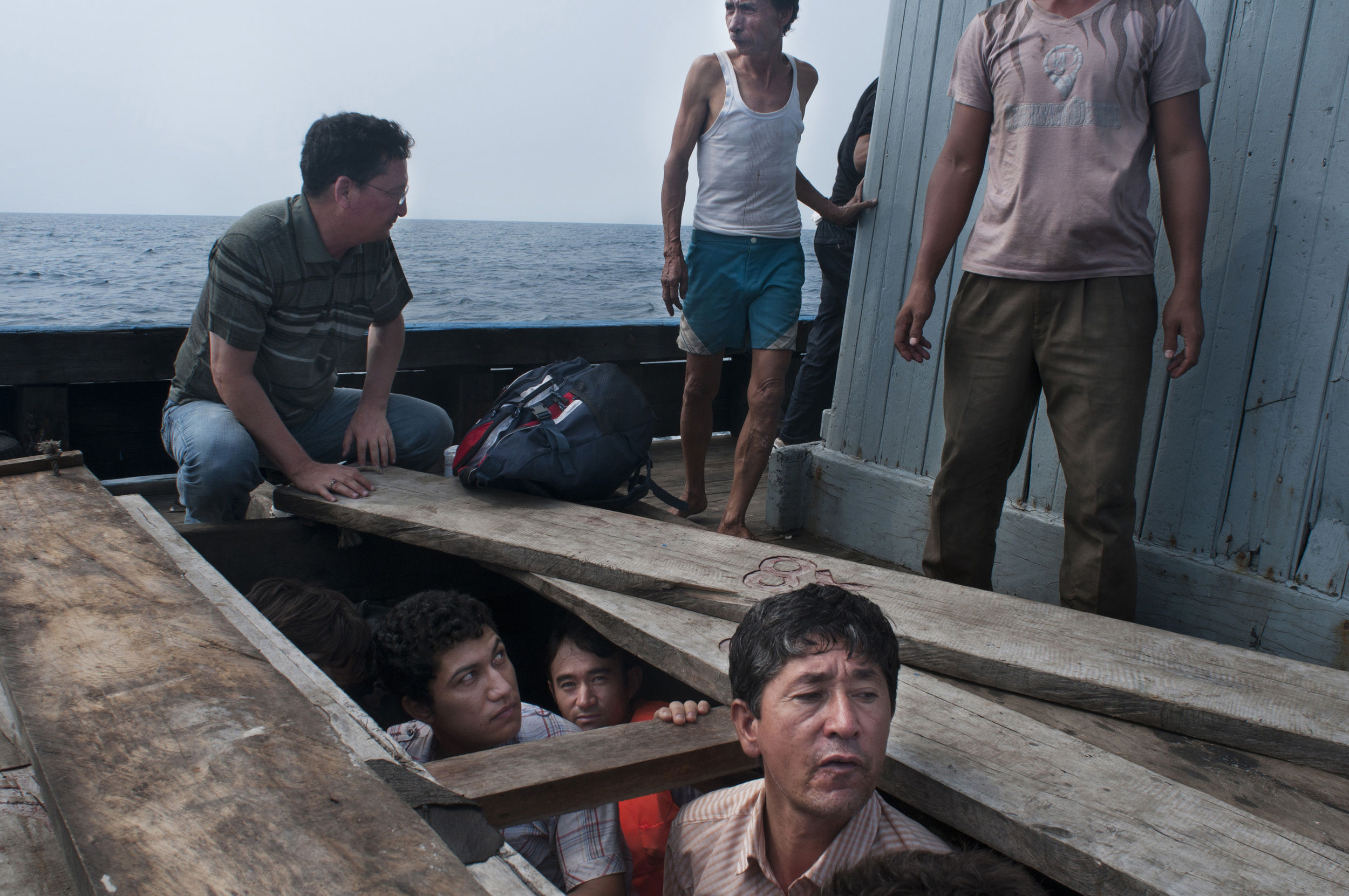Camp Life is CAMP’s very first exhibition. It zooms in on the refugee camp, the asylum center, and the detention center as the nation-state’s perhaps most extreme responses to human migration.
The exhibition shows projects by 9 international contemporary artists and collectives, who examine the politics of detaining refugees and migrants in exceptional spaces.
In different ways, their artworks ask what kind of space the ‘camp’ is, which functions it performs, what political-juridical structures have made camps possible, and what living in a camp does to the subjectivity, body, and soul of camp residents.
The exhibition /
Barat Ali Batoor (Afghanistan / Australia)
Ursula Biemann (Switzerland)
Nermin Durakovic (Bosnia-Hercegovina / Denmark)
Nanna Katrine Hansen (Denmark)
Murtaza Ali Jafari (Afghanistan / Australia)
Dady de Maximo (Rwanda)
Migreurop (transnational)
Trampoline House Women’s Club (transnational / Denmark)
in collaboration with Nanna Katrine Hansen (Denmark), Habib Mohseni (Afghanistan / Denmark), Blake Shaw (USA / Germany) & Kipanga Typeson (DR Congo / Denmark)
Some works in the exhibition portray everyday life and the management of displaced bodies in Palestinian refugee camps, in Danish asylum centers, and in Australian detention centers.
Other works go behind the facade of the camp to examine its logic as a site where the nation-state divides its population into two and places its ‘undesirables.’
And still other works contextualise camp life and describe the flight routes that many refugees and migrants have followed prior to their detention in a refugee camp, an asylum center, or a detention center. Half of the contributing artists and collectives are refugees themselves and have spent time in an asylum or detention center.
Barat Ali Batoor: The Unseen Road to Asylum (2013). Courtesy the artist.
Education & Practical Info /
Camp Life is accompanied by an extensive opening program during which exhibition contributor Dady de Maximo (born in Rwanda) in an elaborate fashion show presents his collection If the Sea Could Talk (2014), which pays “tribute to refugees missing and dead in the oceans, seas, desert, containers, and rivers.”
In addition, CAMP offers weekly guided tours on Saturdays from 3–4 pm by a team of guides from CAMP and the Trampoline House refugee community.
At the end of the exhibition period, on June 19 from 4–6:30 pm, CAMP invites the public to the debate meeting Ill from camp life: Human and medical consequences of long-term stays in the Danish asylum centers, which through a series of health professional, journalistic, and artistic presentations and interventions will take a closer look at the facts and solutions to the poor health conditions in the Danish asylum centers.
Camp Life is curated by the Danish curatorial collective Kuratorisk Aktion, who are also the founders and directors of CAMP. It marks the beginning of the center’s two-year exhibition program Migration Politics. It is followed by a total of five solo and group exhibitions during the period of 2015–17, which traces artistic responses to displacement, border politics, refugee/migrant detention, undocumented migration, deportation, and visions for alternative migration and refugee policies.
CAMP and the exhibition is supported by
The Danish Arts Council, Knud Højgaards Fond, Bispebjerg Bydelspulje, Billedkunstnernes Forbund, Migrationspolitisk Pulje, Sport Dres, and Vordingborg Kaserne.


